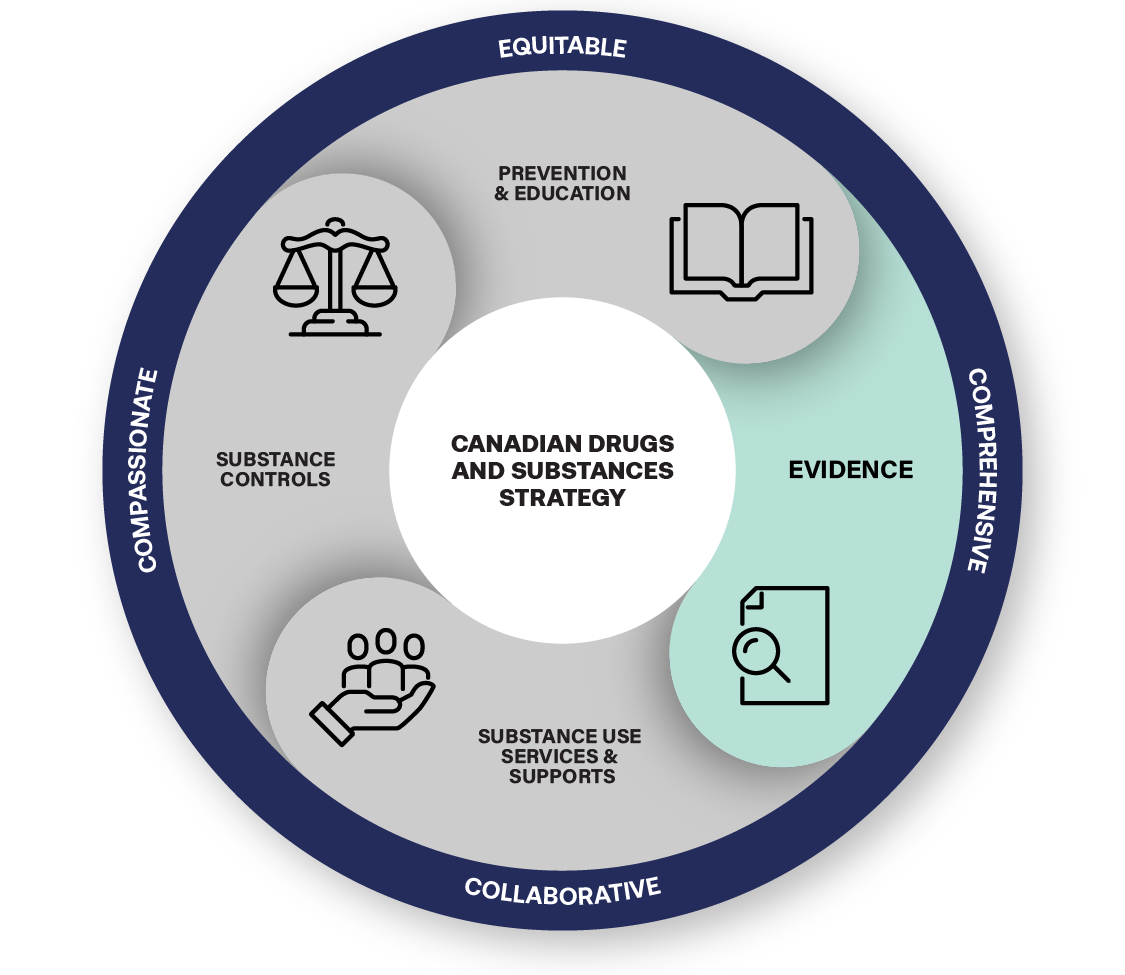Canadian Drugs and Substances Strategy: Evidence
What evidence the strategy uses and how it supports our decision-making.

On this page
About evidence
Accurate, timely, and reliable data are essential to policy development and decision-making. We gather evidence from research studies, surveys and public health surveillance data. This lets us:
- set policy priorities
- respond to emerging drug issues
- measure the impact of our actions
- assess the current drug landscape in Canada
- identify trends related to substance use and related harms, including:
- prevalence of use
- harms like deaths and hospitalizations
How evidence fits into the strategy
We conduct innovative monitoring, surveillance and research related to substance use in Canada. The data and information we collect forms evidence that we use to develop programs and policies related to substance use.
Implementing the Canadian Drugs and Substances Strategy (CDSS) Data and Evidence Framework will support collaboration across federal departments and agencies. It focuses on improving our ability to collect, analyze and share data to support evidence-based and equity informed decision-making.
CDSS Data and Evidence Framework
Collecting data
We continue to conduct our general population surveys and update them to include sex- and gender-based data. This will help us better understand substance use trends among different population groups in Canada. Examples include:
- Canadian Alcohol and Drugs Survey
- Canadian Student Tobacco, Alcohol and Drugs Survey
- Canadian Postsecondary Education Alcohol and Drug Use Survey
Public health officers will work with provinces and territories to collect data on opioid- and stimulant-related deaths and harms. They’ll use this information to produce national data on opioid- and stimulant-related harms like:
- deaths
- hospitalizations
- emergency medical services
We’ll release this data on a quarterly basis, in collaboration with provinces and territories.
Opioid- and stimulant-related harms
Using data
Evidence guides our response to the overdose crisis and broader substance use related harms. Specifically, we use:
- supervised consumption sites statistics
- data, surveillance and research on opioids and other substances
- statistics and data related to opioids, overdoses and substance use in Canada
We’ll use the data we gather to evaluate innovative interventions and policy approaches. For example, British Columbia’s exemption for personal possession for small amounts of certain illegal drugs for people aged 18 and older.
This research will inform substance use services, like supervised consumption sites and safer supply, and the development of guidelines to:
- inform treatment for substance use disorders
- help people living in Canada make decisions around substance use
One example of these guidelines is the Canadian Clinical Guideline on High-Risk Drinking and Alcohol Use Disorder.
Learn more:
- Subsection 56(1) class exemption to possess small amounts of certain illegal substances in the province of British Columbia – health care clinics, shelters and private residences
- Canadian Clinical Guideline High Risk Drinking and Alcohol Use Disorder
Sharing data
We hosted a Knowledge Exchange Series on Safer Supply with key stakeholders to discuss:
- evidence around safer supply
- how available evidence can help support and scale up successful models
Our Drug Analysis Service also provides statistics and trends on illegal drugs and substances by:
- issuing reports on drug trends and new substances of interest
- sharing raw data on substances identified in samples seized by law enforcement
- issuing drug notifications for newly identified potent or dangerous substances in the illegal drug supply
We have also developed a data dashboard on the health of people in Canada which provides information and data trends on indicators like:
- alcohol use
- opioid use
- vaping
- smoking
- cannabis use
We also develop bi-annual simulation models of opioid-related deaths that provide information on the number of these deaths during the overdose crisis. These models help support decision-making processes related to the overdose crisis.
Learn more: